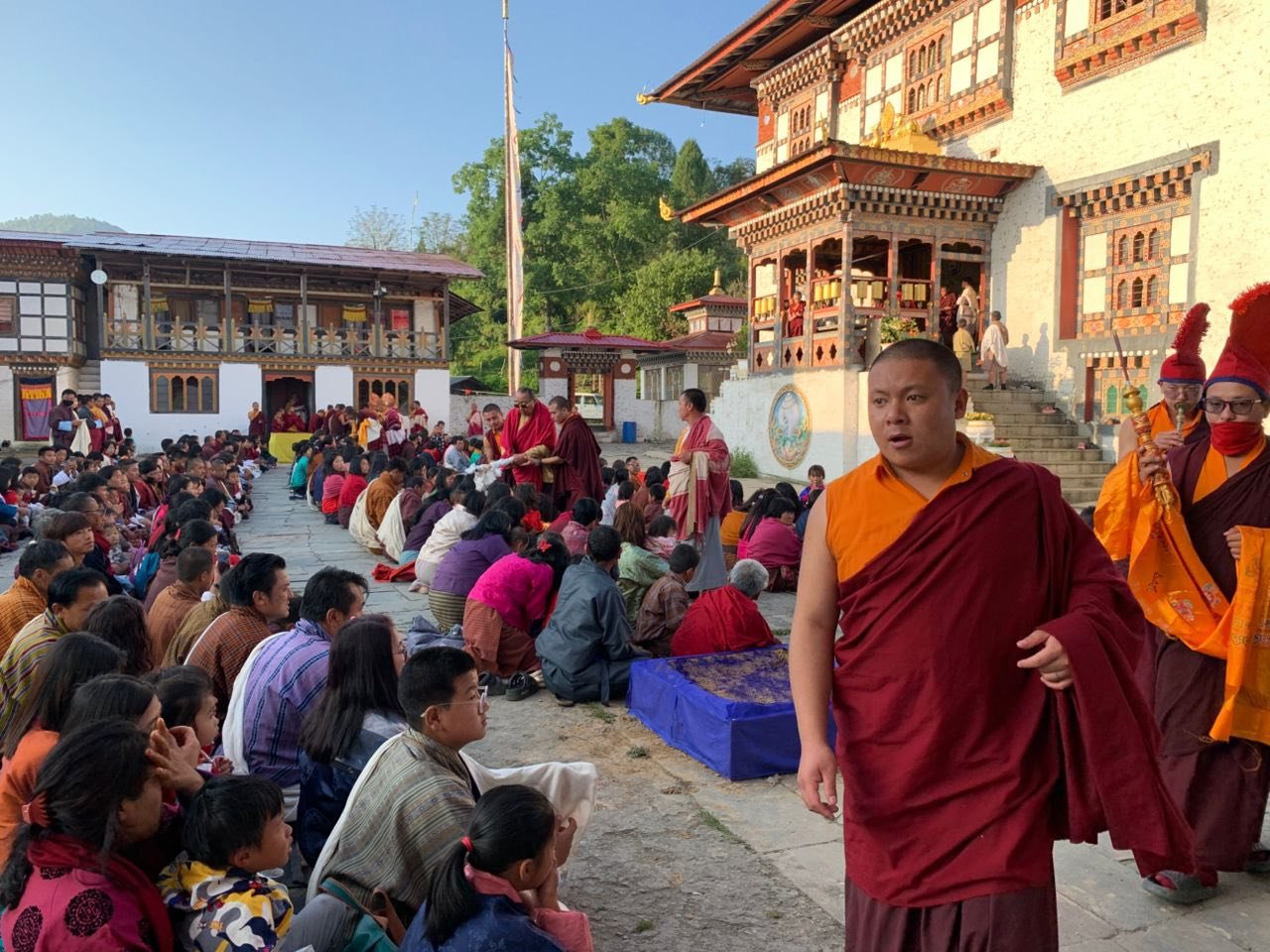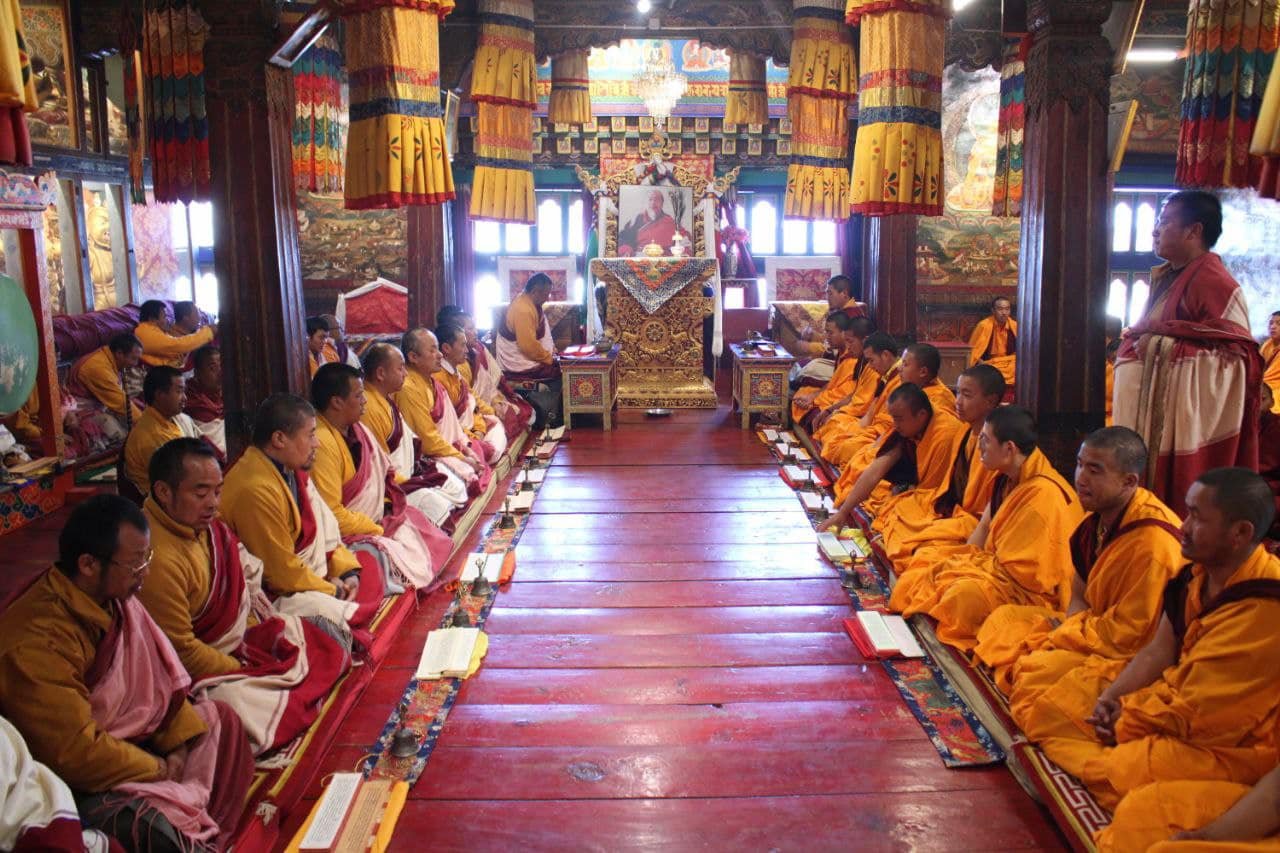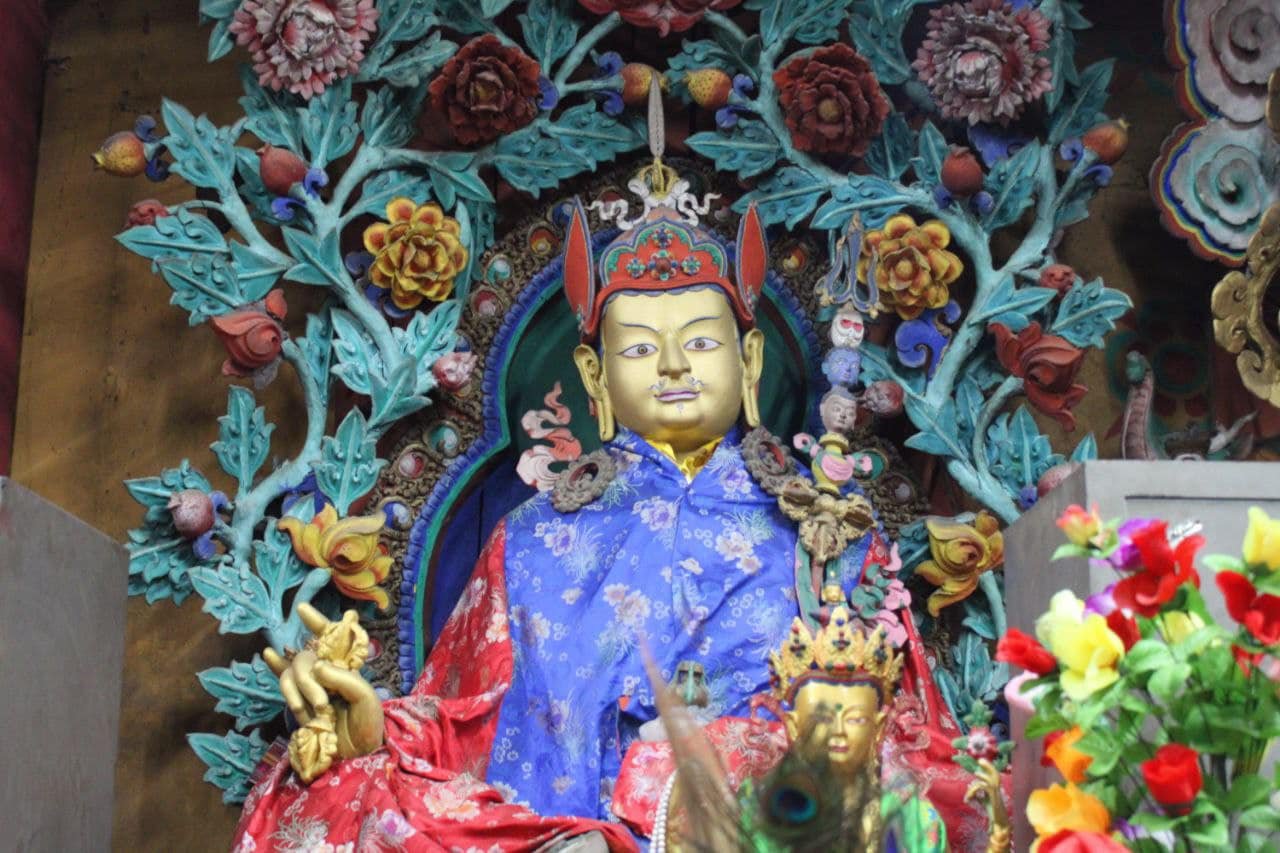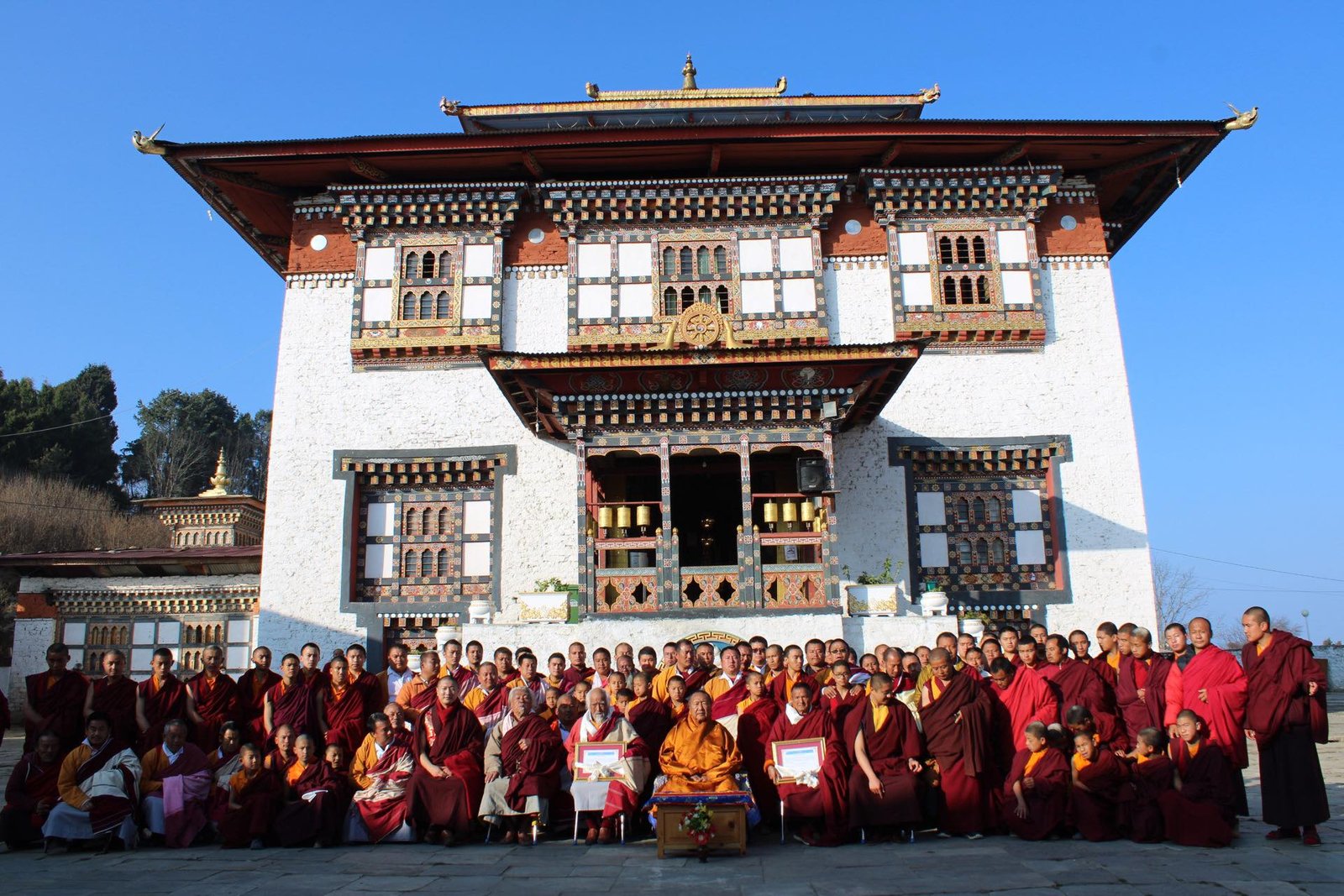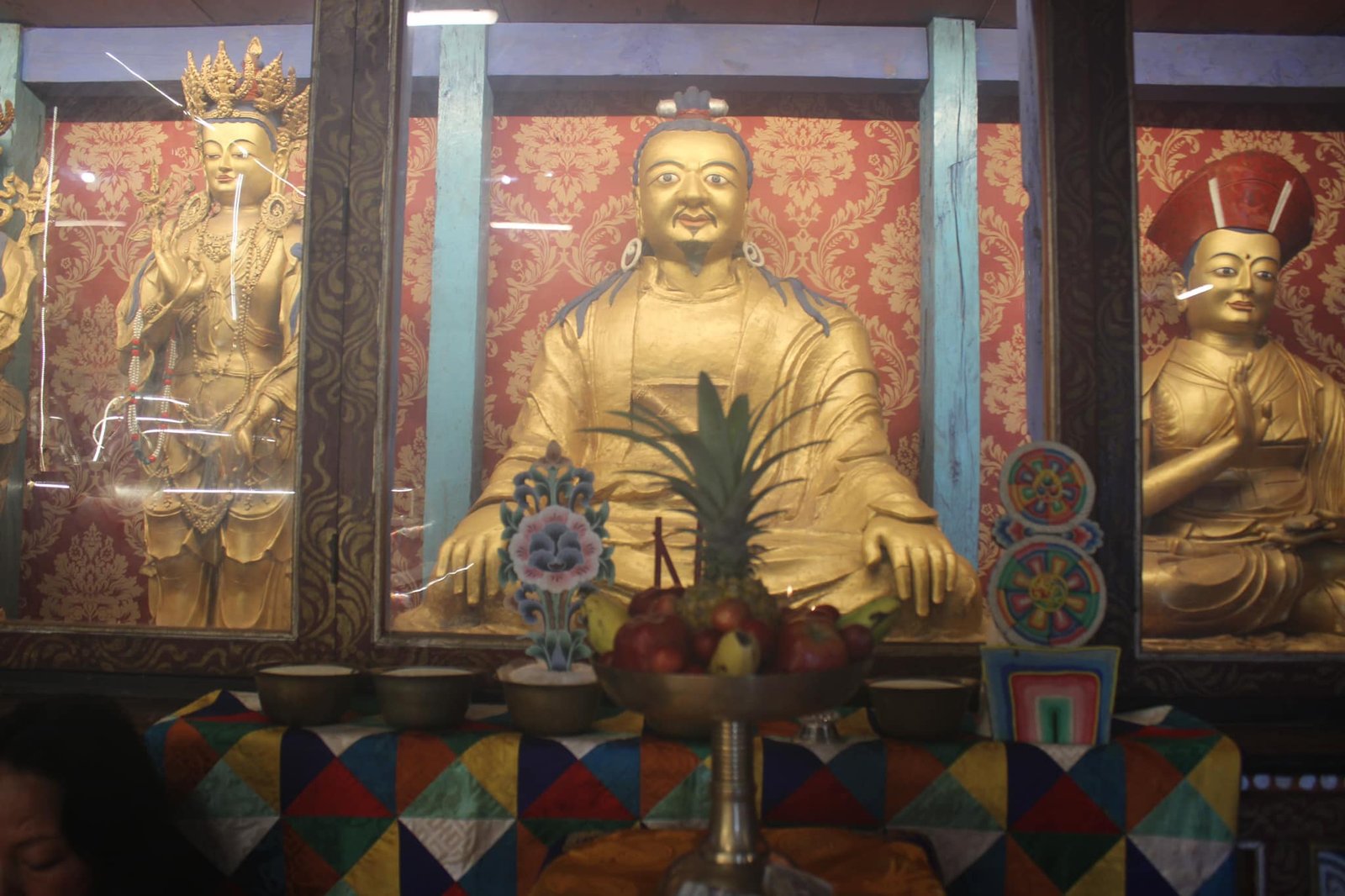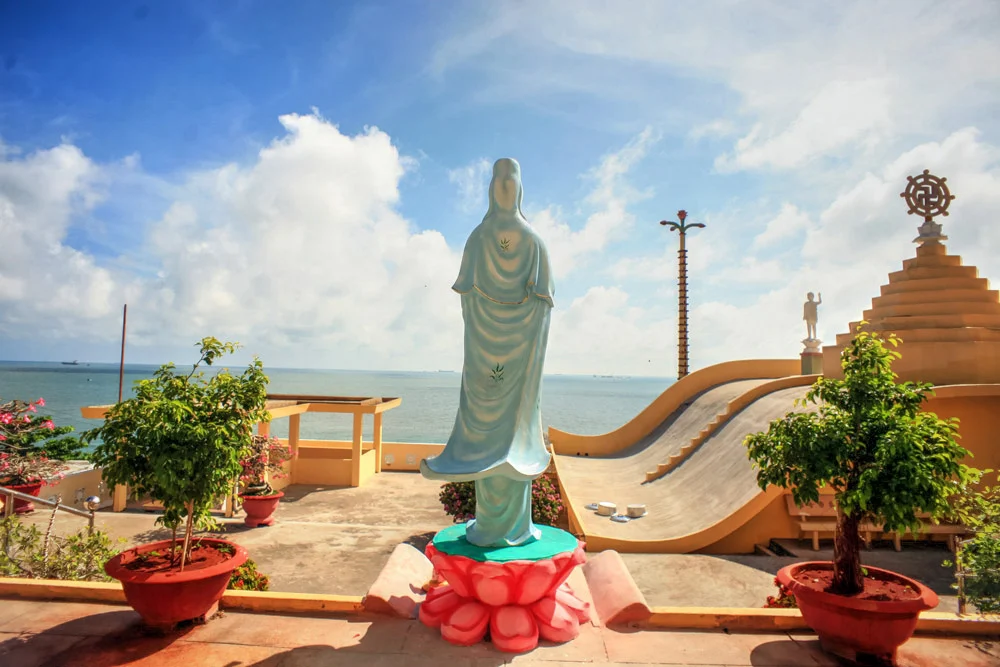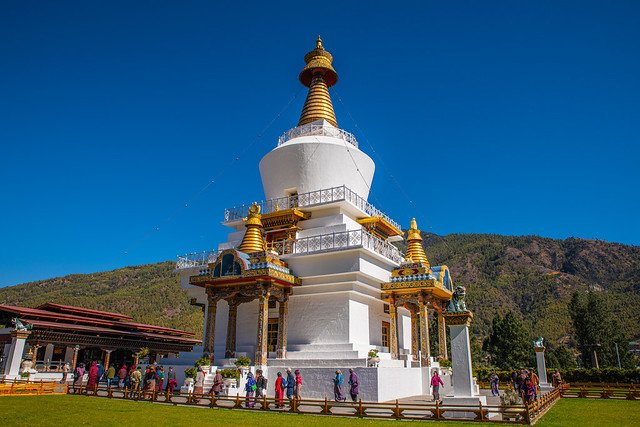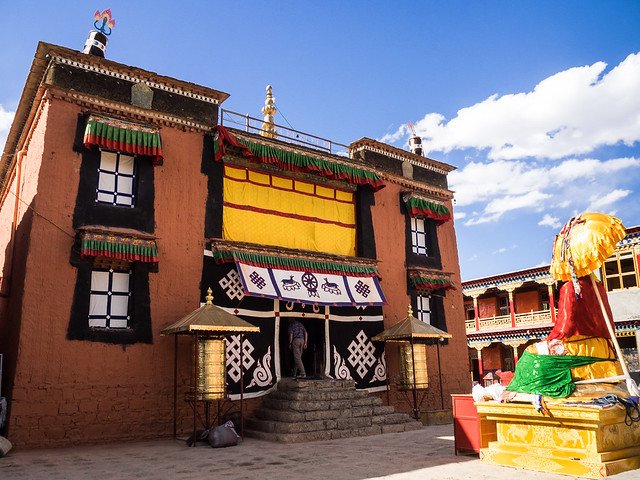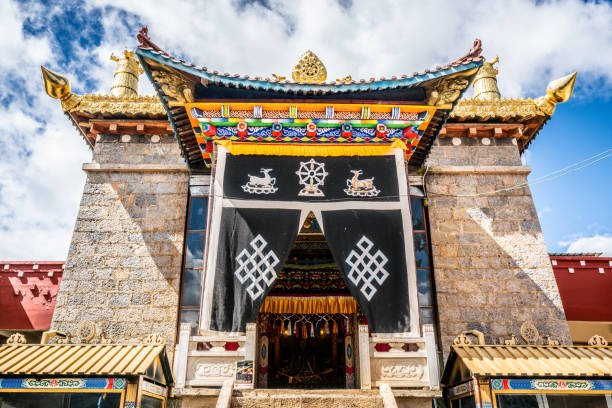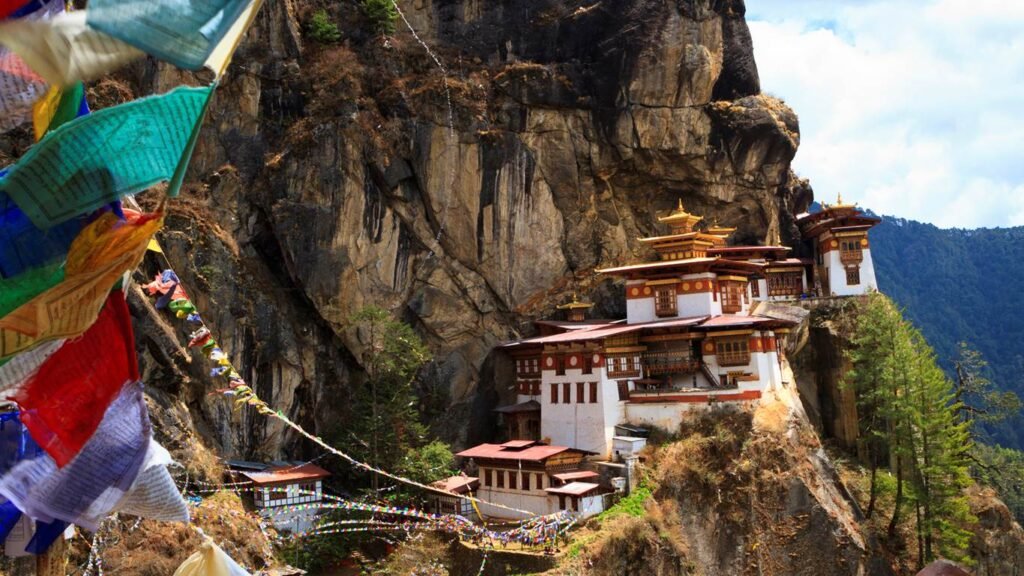Ogyen Doh-Ngag Chokhorling Dratshang: Meditative Bastion of Trashigang’s Nyingma Heritage
As dawn breaks over Trashigang’s highlands, Ogyen Doh-Ngag Chokhorling Dratshang stirs in Yonphula, its whitewashed walls catching the first light above misty slopes. Within, a bronze Guru Rinpoche (Padmasambhava) anchors the prayer hall, flanked by Shakyamuni Buddha and Ekajati, their forms aglow with butter lamps as monks chant Dudjom Tersar mantras. In the courtyard, a chorten gleams during Tshechu, masked dancers swirling to honor Nyingma’s ancient lineage. Founded by Tantric Master Lama Karpo Rinpoche, a disciple of Terton Dudjom Lingpa, and expanded by Yonphula Lama Jigme Tenzin, this dratshang is a meditation stronghold, transmitting Longchen Nyingthik and Dudjom Tersar teachings. Near Yonphula’s airstrip, it draws Sharchop devotees, its rituals weaving Dzogchen wisdom into Trashigang’s rugged embrace. Amid cedar forests and prayer flags, it offers a sanctuary where Bhutan’s Nyingma spirit thrives.
Overview and Significance
Ogyen Doh-Ngag Chokhorling Dratshang, perched in Yonphula, Trashigang, stands as a Nyingma meditation bastion, its chorten and prayer halls channeling Dudjom Tersar and Longchen Nyingthik teachings. This monastery weaves scholarship, ritual, and community, anchoring eastern Bhutan’s spiritual legacy.
Introduction to Ogyen Doh-Ngag Chokhorling Dratshang
Ogyen Doh-Ngag Chokhorling Dratshang, known as Yonphula Monastery, rises in Trashigang’s highlands, its white walls and golden chorten a serene emblem of Nyingma Buddhism, Bhutan’s oldest school, rooted in Dzogpachenpo and Dudjom Tersar traditions. Founded by Lama Karpo Rinpoche, a disciple of Terton Dudjom Lingpa, and nurtured by Yonphula Rinpoche, a Dzogchen master in the Pema Lingpa lineage, it serves as a meditative hub for Sharchop villagers. Its prayer halls and retreat cells foster enlightenment, blending tantric practice with Trashigang’s vibrant community. Overlooking Yonphula’s airstrip, it offers a glimpse into Bhutan’s Nyingma soul.
Historical Journey
The dratshang’s story unfolds through its founders:
- Founding: Lama Karpo Rinpoche established the monastery, likely in the 20th century, as a Nyingma retreat.
- Expansion: Yonphula Rinpoche, a major Longchen Nyingthik and Dudjom Tersar holder, expanded its meditative role.
- Lineage Continuity: As an ngagpa practitioner, Rinpoche strengthened tantric teachings, drawing devotees.
- Modern Vitality: The monastery remains a pilgrimage and meditation center.
Cultural Significance
The dratshang shapes Trashigang’s spiritual landscape:
- Nyingma Stronghold: Transmits Dudjom Tersar, guiding Dzogchen practice.
- Community Anchor: Tshechu unites Yonphula’s Sharchop villagers.
- Meditative Hub: Its retreat cells foster tantric mastery.
Unique Legacy
As a Dudjom Tersar and Longchen Nyingthik center, its chorten and Guru Rinpoche statue define its sanctity.
Community and Global Impact
- Local Bonds: Hosts rituals, binding Yonphula’s community.
- Regional Draw: Attracts eastern Bhutanese devotees.
- Cultural Note: Its tantric focus inspires Nyingma practitioners.
Historical Anecdotes
- Lama Karpo Rinpoche meditated in Yonphula’s caves, blessing the site.
- Yonphula Rinpoche’s initiations drew Trashigang’s faithful, uplifting spirits.
Social Role
Meditations and festivals knit spiritual and social threads.
Artistic Influence
Its murals inspire Trashigang’s thangka artisans.
The dratshang’s history shapes its form, where chorten and murals frame a space of reverence.
Architectural and Spiritual Features
Ogyen Doh-Ngag Chokhorling’s whitewashed halls and Karma Ghadri murals blend Nyingma serenity with Bhutanese craft, its chorten a meditative anchor. This section unveils its design and sacred spaces.
Iconic Design
The dratshang’s stone walls, topped with a colorful wooden roof, rise above Yonphula’s slopes. Its courtyard, fringed by prayer flags, overlooks Trashigang’s cedar forests, with a golden chorten gleaming at the entrance.
Key Structures
- Main Prayer Hall (Lhakhang): A spacious chamber with vibrant murals and altars.
- Chorten: A golden stupa, a focal point for meditation.
- Retreat Cells: Small rooms for tantric practice.
- Monks’ Quarters: A wing housing the monastic community.
Worshipped Statues/Deities
- Guru Rinpoche: A large bronze statue, central to Dudjom Tersar rites.
- Shakyamuni Buddha: A bronze icon depicts enlightenment.
- Ekajati: A fierce deity protects the lineage.
Materials and Techniques
Stone walls and timber beams, with mineral-pigment murals, reflect Bhutanese artistry.
Signature Elements
The golden chorten and Guru Rinpoche statue define the dratshang’s spiritual core.
Lesser-Known Features
- Tersar Murals: Depict Dudjom deities in the hall.
- Prayer Wheels: Line the courtyard, spun by devotees.
Preservation Efforts
Monks treat wood against Trashigang’s humidity, preserving murals.
Environmental Integration
The highland perch ties the dratshang to Yonphula’s forests, a tranquil retreat.
Artisan Narratives
Trashigang painters crafted murals, while carpenters shaped beams.
Symbolic Details
Chorten signifies enlightenment; Ekajati murals evoke protection.
Landscape Integration
The forest view enhances meditative calm, grounding the dratshang.
These spaces cradle the dratshang’s rituals, inviting monks into Nyingma’s meditative heart.
Rituals and Practices
Ogyen Doh-Ngag Chokhorling’s rituals, rooted in Nyingma’s Dudjom Tersar and Longchen Nyingthik, blend chant and tantric practice, fostering enlightenment. This section explores its ceremonial rhythm.
Daily Sacred Rites
- Sutra Chanting: Monks recite Tersar texts at dawn.
- Offerings: Butter lamps and incense honor Guru Rinpoche.
- Meditation: Dzogchen sessions focus on innate wisdom.
Unique Practices
Yonphula Rinpoche’s Drubchen ceremonies, held annually, empower devotees with Tersar blessings.
Festival Traditions
- Tshechu: In October, masked dances honor Dudjom Lingpa.
- Losar: New Year prayers bless Yonphula’s community.
Visitor Engagement
Guests may join chants or observe Drubchen, guided by monks.
Spiritual Community Roles
Monks lead rites; Sharchop villagers support festivals.
Interfaith Connections
Exchanges with Kagyu monks reflect Bhutanese harmony.
Ritual Symbolism
- Torma Offerings: Symbolize impermanence in Drubchen.
- Prayer Flags: Colors balance elements.
Seasonal Variations
Tshechu intensifies in autumn; monsoon retreats deepen meditation.
Monastic/Community Life
Monks practice tantra; villagers tend the courtyard.
These rituals guide visitors to the dratshang’s philosophical core.
Visitor Information
Ogyen Doh-Ngag Chokhorling Dratshang welcomes travelers to Trashigang’s highlands, offering practical details to engage with its meditative heart.
Navigating to Ogyen Doh-Ngag Chokhorling Dratshang
In Yonphula, a 1-hour drive from Trashigang town via the Yonphula airstrip road, the dratshang’s chorten rises amid cedar forests, 30 km north of Trashigang.
Address of Ogyen Doh-Ngag Chokhorling Dratshang
Yonphula, Kanglung Gewog, Trashigang District, Bhutan
Visiting Hours and Etiquette
- Hours: Open daily from 7:00 AM to 5:00 PM, extended during Tshechu.
- Etiquette: Dress modestly; remove shoes in the prayer hall; avoid photographing altars.
Transport Options
- Car: A 1-hour drive from Trashigang via taxi.
- Bus: Trashigang-Yonphula buses stop near the airstrip, then a 10-minute walk.
- Hiking: A 30-minute trail from Yonphula village.
Accessibility and Safety
- Accessibility: The courtyard is flat; steps limit hall access.
- Safety: Yonphula is safe, but carry water for the walk.
Amenities and Surroundings
Restrooms in the courtyard; Yonphula village offers homestays.
Immersive Tips
Visit in October for Tshechu dances or meditate near the chorten.
Nearby Cultural Experiences
- Yonphula Lhakhang: 1 km away, a Nyingma temple.
- Trashigang Dzong: 30 km away, a 17th-century fortress.
Photography Tips
Frame the chorten at sunrise; respect altar restrictions.
The dratshang’s gates open to its Nyingma philosophy, where wisdom and faith unfold.
Cultural and Spiritual Insights
Ogyen Doh-Ngag Chokhorling’s essence lies in its Nyingma roots and Yonphula’s spirit, offering insights into Bhutan’s sacred depth.
Religious Philosophy
Nyingma’s Dudjom Tersar and Longchen Nyingthik teach enlightenment through Dzogchen, guiding monks to clarity.
Environmental Spirituality
Yonphula’s forests reflect nature’s sanctity, a Nyingma value.
Artistic Symbolism
Guru Rinpoche’s statue embodies wisdom; chorten signifies purity.
Community Resilience
Rinpoche’s teachings uplift Yonphula, fostering devotion.
Environmental Stewardship
Villagers plant cedars, honoring Bhutan’s eco-ethos.
Meditative Practices
Dzogchen sessions cultivate insight, open to visitors.
Cultural Narratives
Dudjom Lingpa’s legacy inspires Tshechu tales, binding Sharchops.
Historical Context
The dratshang ties to Trashigang’s Nyingma spread.
These insights weave a reflection on the dratshang’s enduring presence.
Conclusion
Ogyen Doh-Ngag Chokhorling Dratshang shines as a meditative bastion of Trashigang’s Nyingma heritage, its golden chorten and Guru Rinpoche statue a testament to Lama Karpo Rinpoche’s vision. Tshechu’s masked dances and Drubchen’s torma offerings pulse with Dudjom Tersar wisdom, weaving serenity into Yonphula’s highlands. From its prayer hall to retreat cells, it fosters enlightenment amid Trashigang’s cedars. As a Nyingma landmark, it bridges Bhutan’s ancient lineage with its vibrant present, inviting travelers to pause where chants echo timeless devotion.


